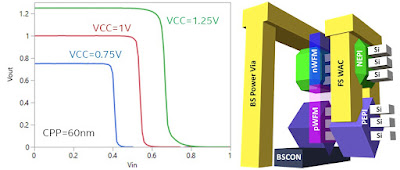From December 1, China will mandate export permits for certain graphite products to safeguard national security amidst increasing international scrutiny over its manufacturing dominance. China supplies 67% of global natural graphite and refines over 90% used in EV battery anodes. This move coincides with foreign governments pressuring Chinese firms on their industrial practices. The U.S. and European Union are implementing measures against Chinese products and technologies. New Western investments aim to counter China's graphite dominance, but success remains uncertain.

According to the USGS, in 2022, the United States did not produce any natural graphite. Instead, 95 U.S. companies consumed 72,000 tons of it, valued at $140 million. These companies were mainly located in the Great Lakes and Northeast regions. Natural graphite was used in batteries, brake linings, lubricants, steelmaking, and other applications. The U.S. imported an estimated 82,000 tons of graphite in 2022, with 77% being flake and high-purity graphite. Due to the rising electric-vehicle market, graphite consumption is expected to grow. Since 2018, the global battery market for graphite has surged by 250%. The U.S. has four operational lithium-ion battery plants and 21 more in development. These plants, when fully operational, will need about 1.2 million tons of spherical purified graphite annually, with 40%-60% sourced from synthetic graphite.
Source: USGS
U.S. graphite imports saw a decline in 2019 and 2020 but rose by 55% in 2022. This increase is attributed to the demand from the lithium-ion battery industry. China dominated the graphite production in 2022, accounting for 65% of the global output. North America's graphite production was just 1.2% of the global supply. Projects to explore and produce graphite are ongoing worldwide. The geopolitical conflict in Ukraine has impacted graphite production and trade relations, affecting the global graphite market.
Europe heavily relies on graphite imports, primarily from China, but aims to reduce this dependency by advancing local mining projects. The EU has categorized graphite as a critical raw material due to its importance in the EV battery sector. Notably, mining initiatives in Sweden, such as Woxna Graphite Mine, and Norway's Skaland Graphite operation are underway to bolster local supply chains. With the rise of European battery gigafactories, securing a stable graphite supply has become imperative.
Why is graphite important?
Graphite is a crucial component in electric vehicle (EV) batteries, specifically in the lithium-ion batteries that power most EVs. Here's how graphite is used:
Anode Material: In a lithium-ion battery, there are three primary parts: the cathode (positive electrode), the anode (negative electrode), and the electrolyte. Graphite is used as the primary material for the anode. When the battery is being charged, lithium ions move from the cathode through the electrolyte and get stored between the layers of graphite in the anode.
Conductivity: Graphite is a good conductor of electricity. This property is essential for efficiently moving electrons in and out of the anode during the charging and discharging cycles of the battery.
Stability: Graphite has a layered, planar structure. This allows lithium ions to easily slip between these layers, a process called intercalation. This structure provides a stable housing for lithium ions, ensuring the battery's longevity and safety.
Volume Expansion: One of the challenges with lithium-ion batteries is that materials can expand and contract significantly as they absorb and release lithium ions. Graphite's structure can accommodate this volume change, helping to maintain the integrity of the electrode.
Natural vs. Synthetic Graphite: There are two main types of graphite used in EV batteries: natural flake graphite and synthetic graphite. Both types can be processed to achieve the desired properties for battery anodes. While natural graphite is mined, synthetic graphite is produced from petroleum coke.
The increasing demand for EVs has led to a surge in the need for graphite. As a result, the sourcing, processing, and supply chain for graphite have become critical considerations for the battery and EV industries.
Sources:
China, top graphite producer, to curb exports of key battery material (cnbc.com)
Graphite (Natural) (usgs.gov)



%20(1).png)






















